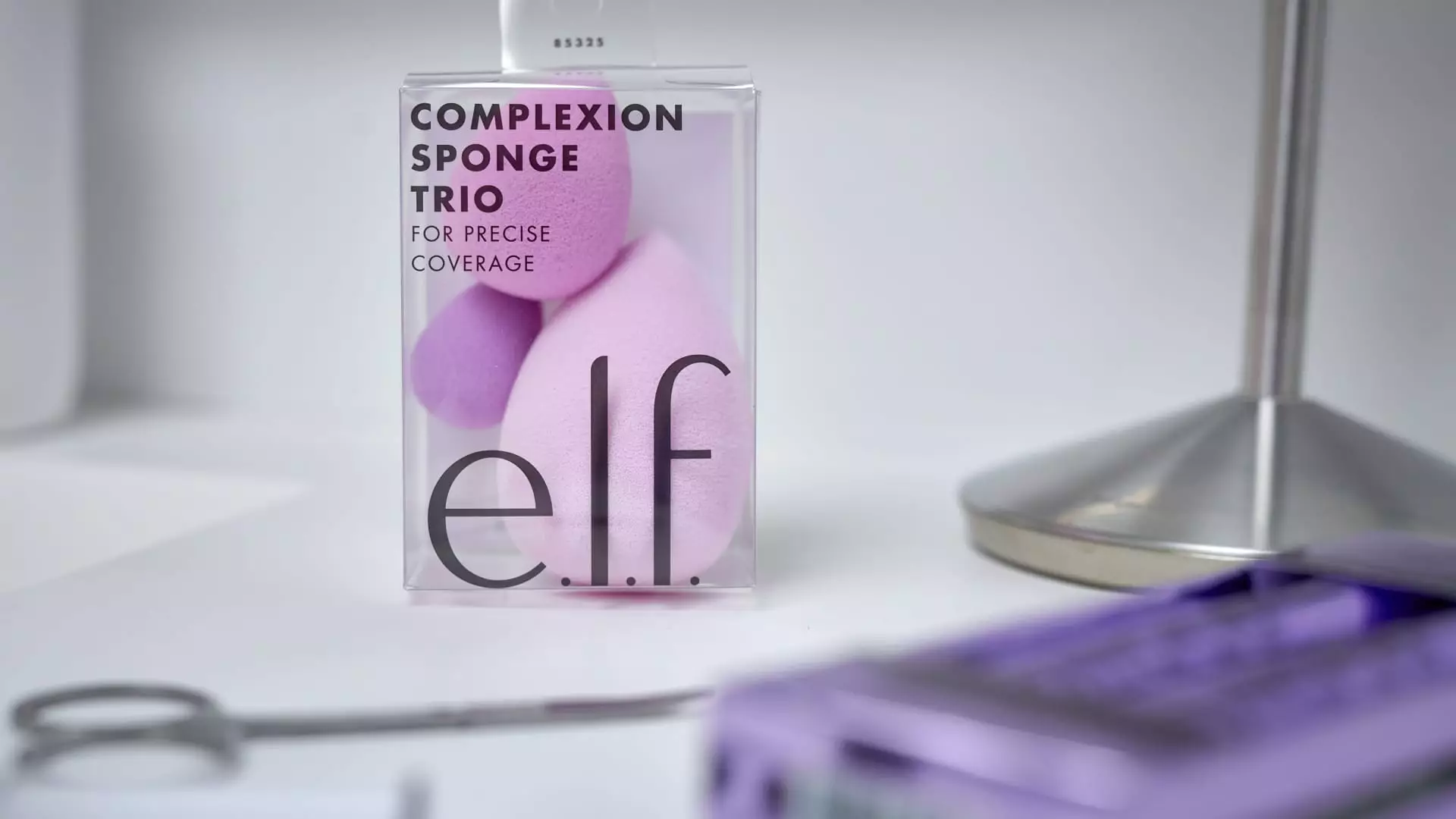E.l.f. Beauty has made headlines recently, but not for the reasons that would be expected from one of the industry’s most formidable players. Known for its innovative products and appealing price points, the brand has found itself facing a significant downturn that has prompted a reassessment of its full-year expectations. This article delves into the recent financial results of E.l.f. Beauty, the challenges it faces, and how these factors might shape its future trajectory in the beauty industry.
E.l.f. Beauty reported a disappointing 36% drop in profits in its financial report for the quarter ending December 31. While sales did show a robust year-over-year increase of 31%, rising to $355 million from $271 million, profit margins seem to have taken a hit. Specifically, the adjusted earnings per share were 74 cents, slightly under Wall Street’s expectations of 75 cents. In a sector where consistency and growth are essential, such fluctuations raise eyebrows, especially considering that this is not merely a one-off occurrence but a part of a larger trend of underwhelming performance.
The adverse changes in E.l.f.’s financial outlook caused a notable reaction in the stock market, with shares plunging more than 20% in after-hours trading. Investors, naturally cautious, reacted swiftly, which reflects a broader anxiety surrounding the brand’s financial stability. The projected full-year sales guidance was increasingly concerning, now expected to fall between $1.3 billion and $1.31 billion—below previous projections of $1.32 billion to $1.34 billion. With the shift in these figures, the outlook for adjusted earnings per share has also been dimmed significantly.
CEO Tarang Amin addressed these grim forecasts during an interview, attributing the downturn to broader market factors, including an overall slowing in the beauty category. Particularly noteworthy was Amin’s observation regarding the impact of “social commentary” on sales. In January, the mass cosmetics market reportedly saw a decline of 5%, which Amin elaborated could be linked to social media’s waning buzz around beauty products. This deterioration is especially relevant given our current sociopolitical climate, which can influence consumer behavior and purchasing decisions.
In addition to this social media dynamic, Amin mentioned ongoing uncertainties stemming from global events, such as the Los Angeles wildfires, which put a strain on how brands engage their audience during sensitive times. The recent climate surrounding platforms like TikTok, with discussions revolving around its potential closure, may also have deterred influencers and consumers from a focus on beauty, further contributing to the downward sales trends.
Beyond social media trends, E.l.f. is also contending with external economic pressures, such as newly imposed tariffs on goods imported from China, where a sizable portion of its supply chain is located. Although Amin stated that the current 10% tariffs were less severe than anticipated, the unpredictability of international trade dynamics could still trigger price adjustments or a reevaluation of product sourcing strategies in the near future.
Historically, E.l.f. Beauty has emphasized its commitment to offering high-quality products at competitive price points by providing “dupes” for luxury cosmeceuticals. This strategy capitalized on a growing consumer preference for affordability in beauty products. Yet, as growth stabilizes and the prior methods of driving sales falter, the company must consider how it can innovate to maintain relevance and competitive advantage in an oversaturated market.
Despite the obstacles E.l.f. Beauty is currently facing, the company maintains an optimistic outlook simply by being ahead of the broader beauty category’s performance. Addressing the challenges that remain, E.l.f. plans to utilize its profits to enhance internal structures such as inventory management, aimed at fostering resilience during unpredictable market conditions. This prudent approach reflects a deep understanding of the volatility ingrained in the beauty industry.
As the company continues to innovate and expand internationally, it could potentially regain consumer interest and appetite for its products. The challenge will be integrating new strategies that meet the evolving needs of consumers while capitalizing on its well-established brand identity—a task that will require not only creativity but agility in execution.
E.l.f. Beauty is at a critical juncture; while recent performance indicators suggest turbulence, the company’s proactive approach and commitment to adapting to market conditions could ultimately position it for renewed success. The pathway forward may be fraught with challenges, but the journey of resilience and adaptation will define E.l.f.’s next chapter in the ever-competitive beauty landscape.

